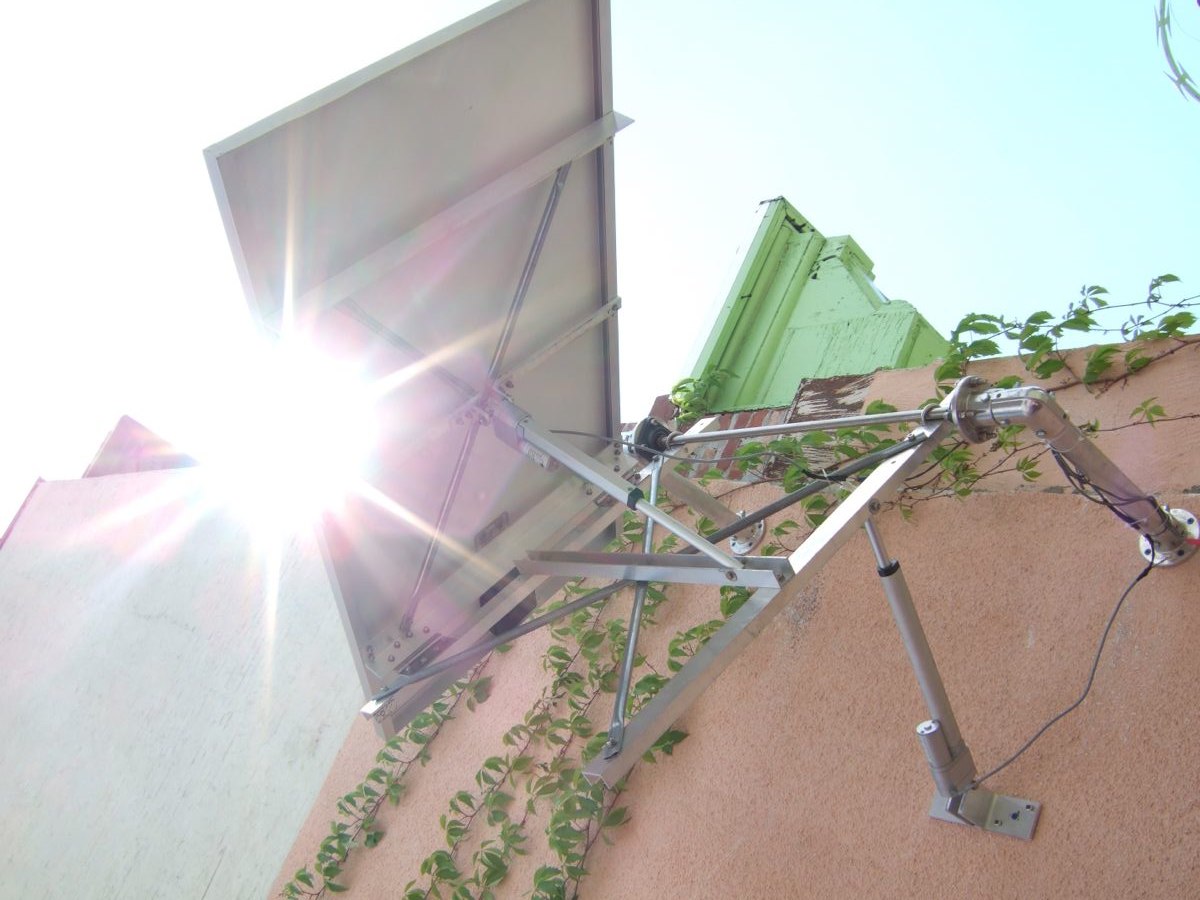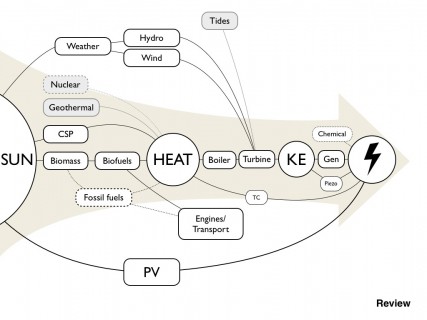Back to the class overview
Week 1 – Intro / Energy Overview
2/23/12
Introductions and energy stories. Energy in the universe from the big bang to 1700AD. Pendulum contest. Kinetic energy notes. Electronics lab introduction.
BEAM examples (Solar-1). Some Solar-2 type projects
Assignments:
- Get the text.
- Identify the power consumption of one device you use daily.
Reading:
- Smil, Energy, a Beginner’s Guide Chapters 1 and 2
Week 2 – Kinetic and Solar Energy
3/01/12
Reading review. Power of various devices. Kinetic and solar specifics. Electricity lab: voltage, current, batteries, LEDs, and resistors. Measuring electricity with a multimeter. Reading review with Alex, Holly, Will, and Sonja.
Resources:
- Lecture notes: Kinetic and Solar Energy
- Kinetic/Electrical one-sheet
- Anatomy of a Stepper Motor
- ITP Notes on electrical components.
- Basic LED circuit, and LED details.
- The drawings from class: 1 and 2
Assignments:
- Choose to pursue a solar or kinetic project, and whether or not you want to be part of a class-wide parts-order for either track. If you elect not to be part of the order you will be expected to source your own materials to have on hand no later than week 4. Email me by the end of today (3/01) as to your choice so I can place the order ASAP.
- Using the device you looked at last week for power consumption, estimate the time it spends using power. It may have several states – e.g. a phone charger might have the following: 1) charging a phone with a depleted battery, 2) connected to a fully-charged phone (top-off or maintenance charge), 3) not connected to a phone but still plugged in, and 4) not plugged in. For each, there would be an associated power and time. Use that info to estimate what a typical day’s worth of energy for that device would be, in joules, watt-hours, or (for something big) kilowatt-hours.
- If you did not get a chance to solder something or light up an LED in class, do so before next week.
Reading:
- Smil, Energy, a Beginner’s Guide Chapters 3 and 4.
- Optional: For a good introduction (or review) to electricity, look at “Anatomy of a Flashlight”, chapter four from the excellent book “Code“, by Charles Petzold.
Week 3 – Energy Storage
3/08/12
Reading review. Daily energy of various devices. Electricity lab: switches, capacitors, transistors; measuring current; rectifying AC. Soldering. Energy storage in general, capacitors in particular.
Solar storms are in the news today; they can cause unwanted induced currents that disrupt the power grid.
Resources:
- Lecture notes: Energy Storage
- Where to buy: The solar and kinetic parts for level one projects came from Electronics Goldmine and Mouser. EG is a surplus store, so stock varies but is priced well. Alternatives include All Electronics (plenty of basic parts), American Science and Surplus (weird and fun), and Surplus Center (good for medium to large motors and mechanical parts). Mouser is a giant electronics supplier and has almost any component imaginable if you can figure out how to specify it. Main competitor is DigiKey. Jameco also has lots of electronics, plus small motors, kits, etc. Other fun sites: AdaFruit, Sparkfun, and Evil Mad Scientist.
- Solar parts: Solar panels, motor, TC54 voltage trigger, transistor (various), timing capacitors (various, small), storage capacitors (various, biggish).
- Kinetic parts: DC gear motor, rectifier diodes, supercapacitor (storage), ultrabright LED, resistor.
- As suggested in class, here is a class wiki page.
Assignments:
- Make sure you are familiar with the components and ideas covered in class so far: DC power supplies or batteries, resistors, diodes and LEDs, multimeters for measuring voltage and resistance.
- If you are pursuing a level 1 project, research your area: BEAM robotics, or DIY kinetic electrical generation. Find a project of interest to show in class next week.
- If you are pursuing a level 2 project, email me your project concept before 3/15. Also, identify all the parts you will need this week, and order them so they arrive no later than 3/20.
Reading:
- Smil, Energy, a Beginner’s Guide Chapter 5.
Week 4 – Energy Conditioning
3/15/12
Energy storage exercise. Reading review. Lab: rectifiers and transistors; measuring current. Power conditioning notes. Group meetings.
BEAM Video (r-click to download; right now audio plugin is trying to play this)

Resources:
- Lecture Notes: Energy conditioning strategies
- Solar parts bag 1 includes: three small capacitors (1, 2.2, and 10 uF), three transistors (3904, 3906, 2n2222), two voltage triggers (TC54 2.7V and 4.2V), and a diode. Panels, motors, and storage caps delayed in shipping.
- Transistor basics. More detail here.
- The basic Solar Engine circuit.
Assignment for week 5:
- Prepare for a progress report meeting next week. You should have all your materials on hand and the implementation of your project should be underway. Bring your project in its current state to class.
Reading:
- Smil, Energy, a Beginner’s Guide Chapter 6.
Week 5 – Progress Reports / Individual Meetings
3/22/12
For those using the solar kits, here is a record of the costs: SolarKitInvoice.pdf We can round down to $19 – please reimburse me before the last class.
Quiz:
- Describe the solar constant? What is its value in SI units?
- What is the approximate average power of an adult human body? (BMR)
- You have a 1 Farad capacitor at 0 volts. You charge it to 12 volts in 1 minute. How much energy did you store in the capacitor? What was the charging power?
- You now use the capacitor to run a motor for 10 seconds. What was the discharge power?
Week 6 – Final Workshop
3/29/12
For the BEAM bot folks, here are some resources:
- Short and long instructions for “freeforming” our circuit (from solarbotics).
- A set of photos showing a build I did of the circuit. Link is to a zipped set of the same from Flickr above. If looking at flickr, make sure “show info” is on , as the picture descriptions have some tips about each step.
- Videos of the result. (Also on Flickr)
Week 7 – Final Presentations
4/5/12 : Projects finished, documentation due.
Present your working projects in class. Document (in an email, blog or wiki post) the following by end of day 4/5:
- Estimate of the power in to your project. Why?
- Estimate of energy stored. Why?
- Estimate of power out. Why?







